Mayonnaise is the classic condiment for fries and sauces for a reason, but you don’t only have to buy it pre-made. Thanks to this recipe, you will be able to make your very own, creamy, rich, and delicious homemade mayonnaise from scratch in barely any time at all! Make sure that you only use pasteurized eggs (click that link to read how to do this at home) .
The great thing about homemade mayonnaise is that it can be used as a base for other delicious sauces like this Honey Mustard Sauce! Or you could use your mayonnaise to make a bright and zesty Lemon Aioli!
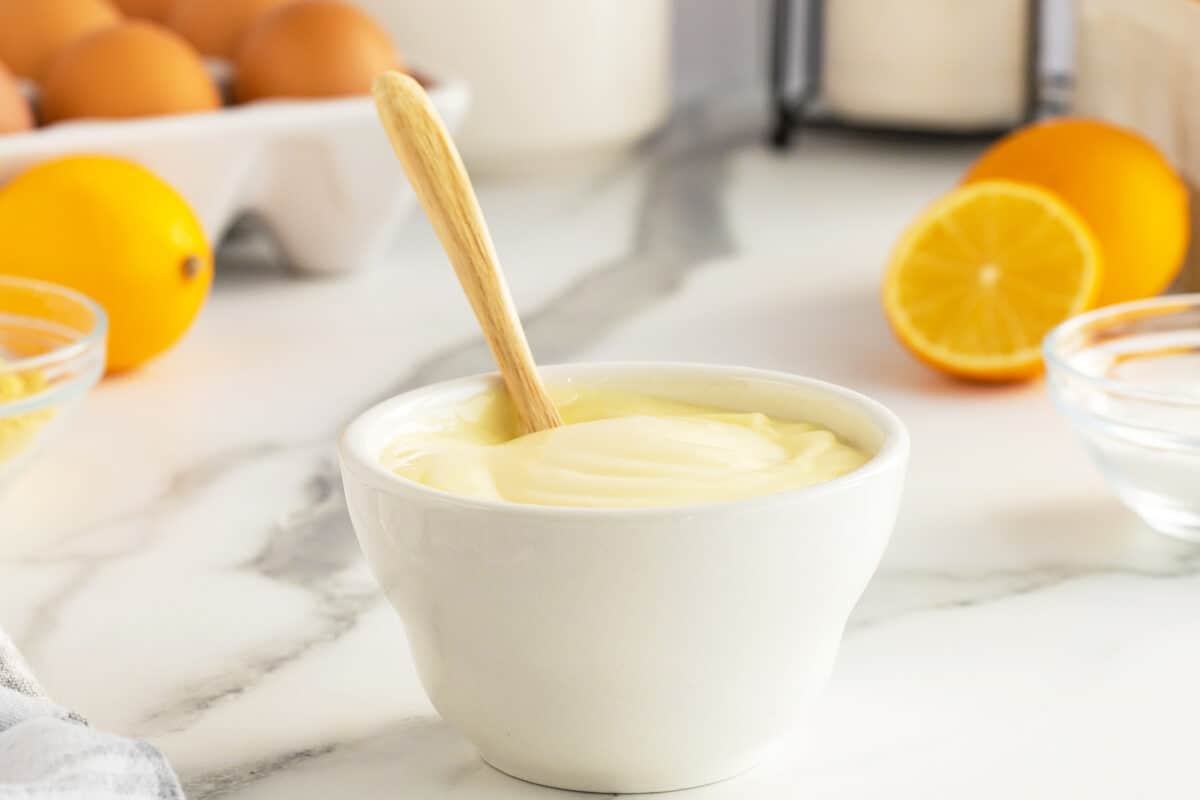
Homemade Mayonnaise
Mayonnaise is perhaps the most versatile and tasty condiment there is – though don’t say that in front of ketchup lovers.
Most of the time, though, store-bought mayonnaise has that pallid, unpleasantly white color that some find pretty gross. Plus, the store-bought stuff just doesn’t taste that great, despite still being decently fatty and rich.
Instead of relying on the rather lame stuff from the supermarket, why not learn how to make your own instead?
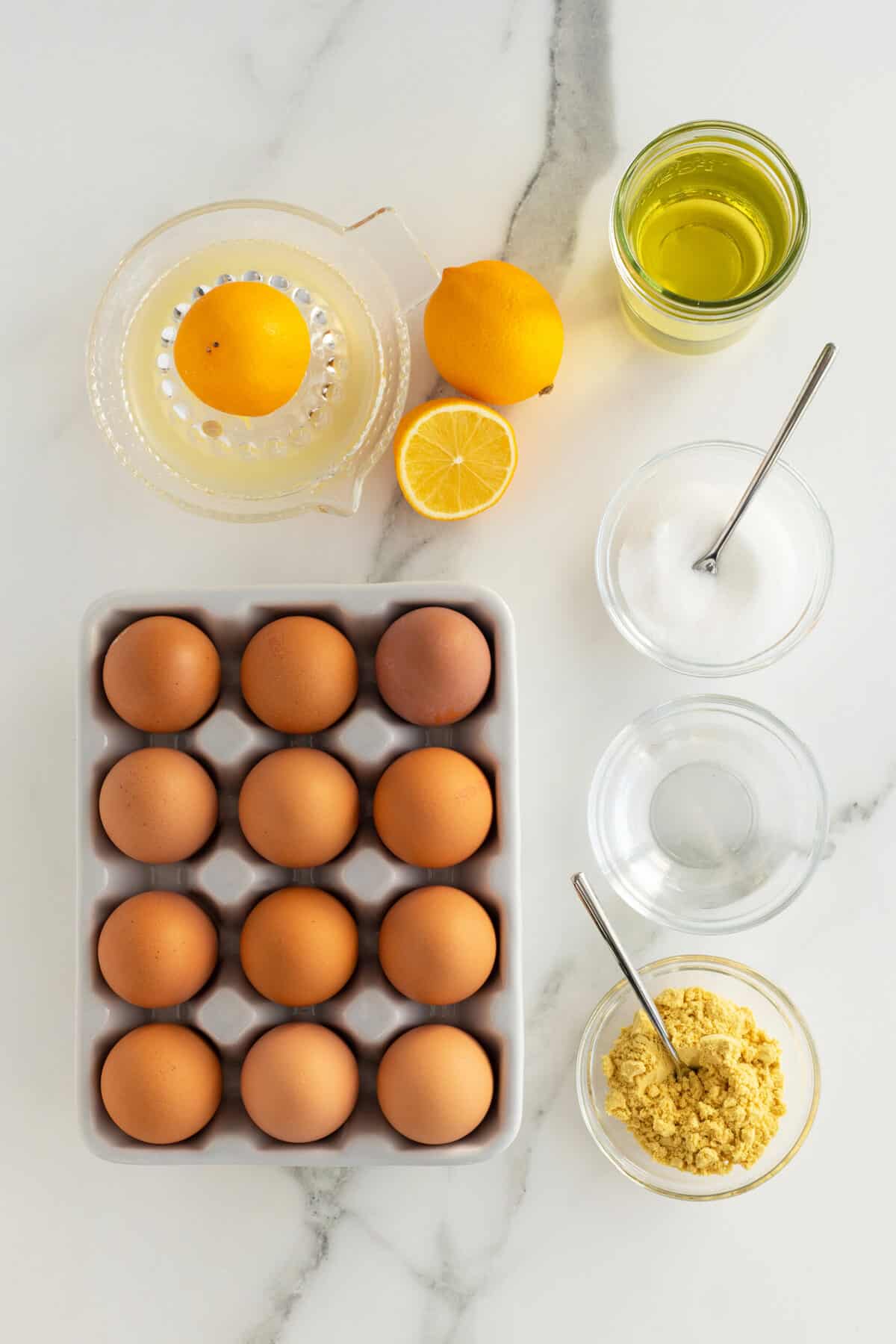
Do You Have To Use Canola Oil Or Can You Use Other Vegetable Oils?
There is a whole lot of intense research and discussion out there regarding the amount and type of oil to use when making mayonnaise, and no less than the great J Kenji Lopez Alt has written pages and pages about it.
However, the ultimate takeaway is that the type of oil you use is going to affect both the consistency of your mayonnaise, as well as its taste.
Canola, vegetable, sunflower, or any other neutral oil is definitely going to be the best option, because not only will it let the other flavors in the mayonnaise shine through, but it will also be the best for preserving the emulsion.
While more flavorful oils like olive oil will certainly have a lot more flavor and will make the final mayonnaise way more delicious, they are usually just too dense to maintain a stable emulsion.
If you do want a more olive oil-like flavor, feel free to replace up to around half of the canola oil with olive oil. If you add it slowly and don’t use too much, then the olive oil should be able to help flavor everything, without causing it to collapse.
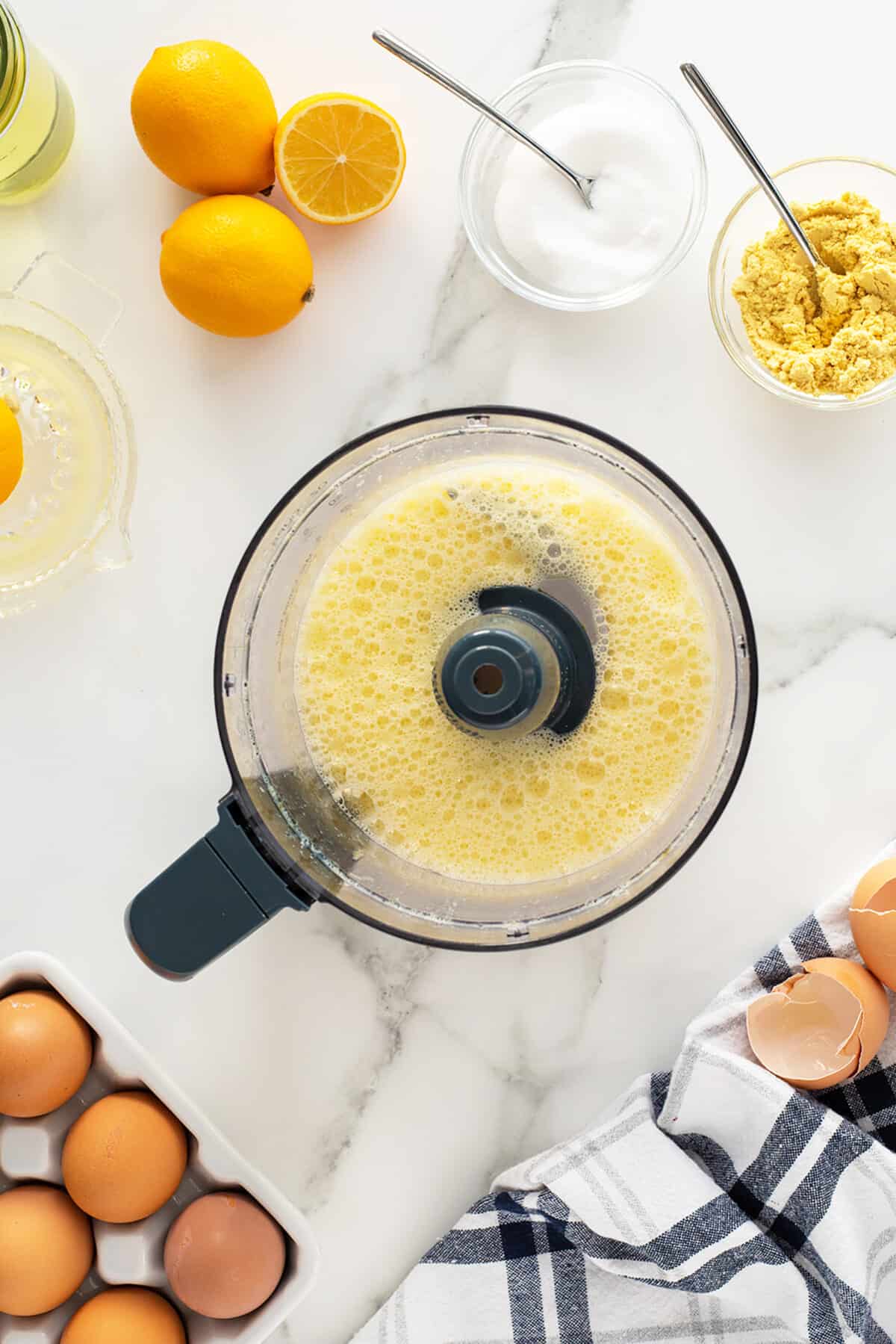
Why Do You Need To Use Pasteurized Eggs?
When it comes to using raw eggs in any kind of recipe, there is always going to be that inherent fear of salmonella poisoning.
This fear isn’t completely unfounded, as salmonella is definitely not something you want to risk if you have the option.
This is why many recipes, including this one, will advocate the use of fresh, ideally refrigerated eggs that have no obvious cracks on them that are then pasteurized OR buying pasteurized eggs from the store.
While we can’t be so lucky as to live somewhere like North America, where all chickens are vaccinated and salmonella is relatively rare, there is just always going to be that slight risk of salmonella.
Then once you have the best quality eggs, make sure to pasteurize them.
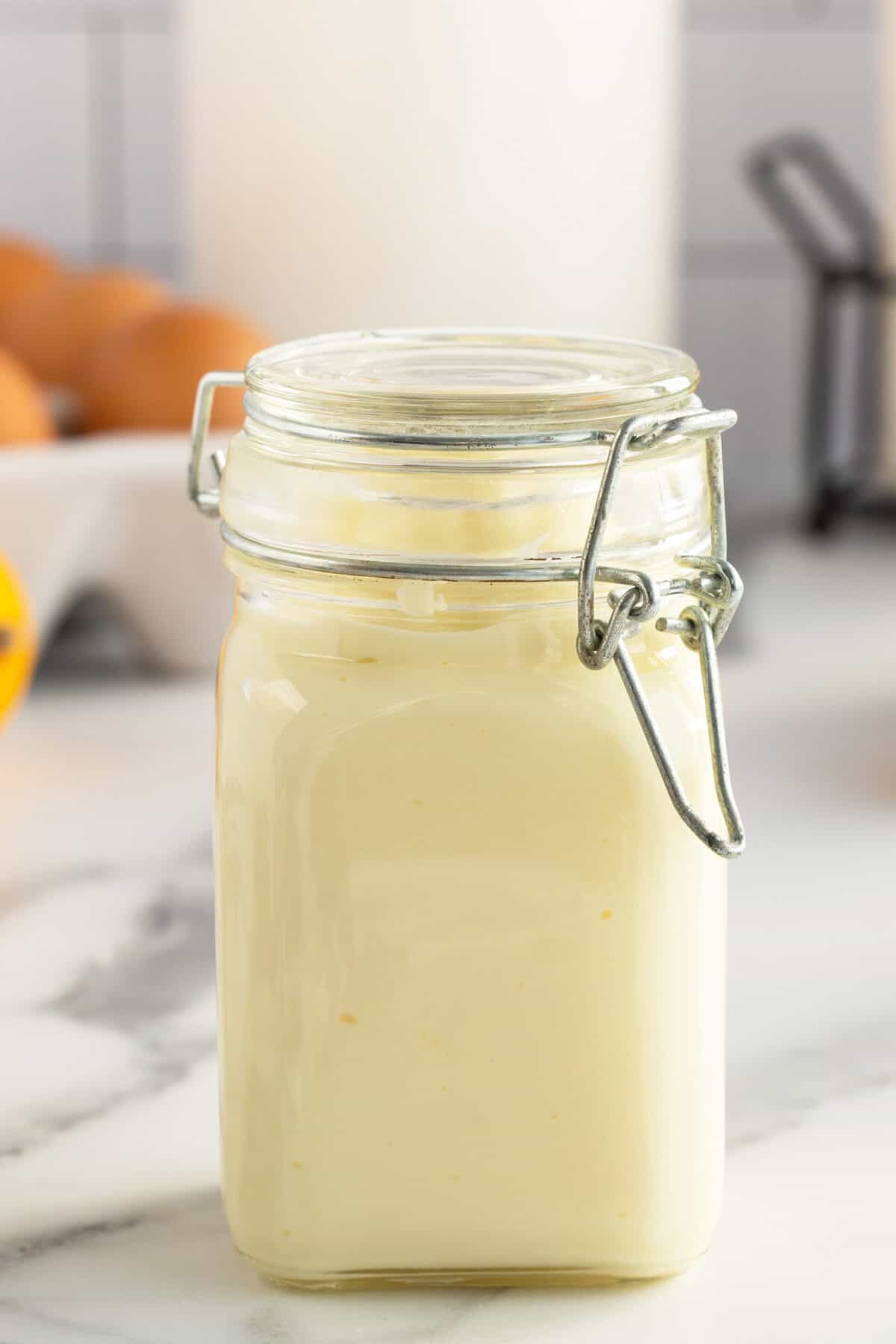
Why It Is Important To Add The Oil Slowly
Everyone knows that you need to add your oil slowly, but few ever really understand why.
Well, the thing about mayonnaise is that it is a hopefully stable emulsion of fat, protein, air, and water.
The oil forms the majority of the mayonnaise, and the only way that it stays in suspension is if the protein and acids found in the eggs, mustard, and lemon juice, have the opportunity to wrap around the fat molecules and hold them together.
There is a whole lot of complicated science surrounding this, but it all boils down to the fact that, if you add the oil all at once and try and just mix it together, the emulsifiers will never have the chance to surround the fat in the oil, and the mayonnaise just simply won’t hold together.
So add your oil super slowly, and hopefully, your mayo won’t break!
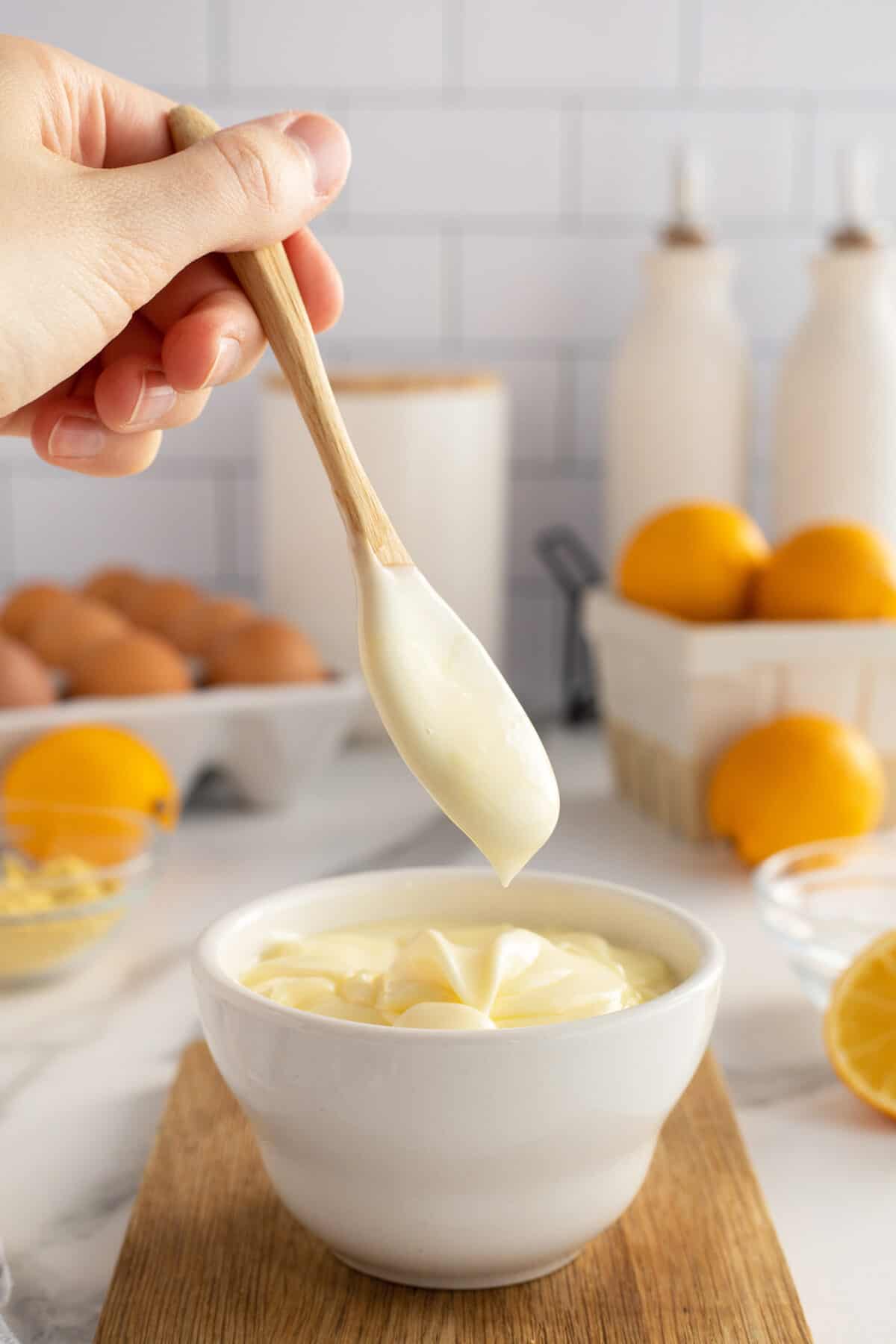
How To Fix Your Mayonnaise If It Breaks
Broken mayonnaise, just like broken Buttercream, is one of the most tragic things that can happen to a home chef.
However, you don’t need to throw everything out!
If your mayo breaks, just pour away any excess oil that won’t mix in, and add in some more emulsifiers really slowly.
Though it does increase your risk, the best thing to do is to slowly add in another egg yolk! Egg yolks have incredible emulsification properties, and the use of a whole extra egg yolk will likely start the emulsification process over again, ensuring that everything binds together properly.
Just remember to whisk everything together slowly and carefully!
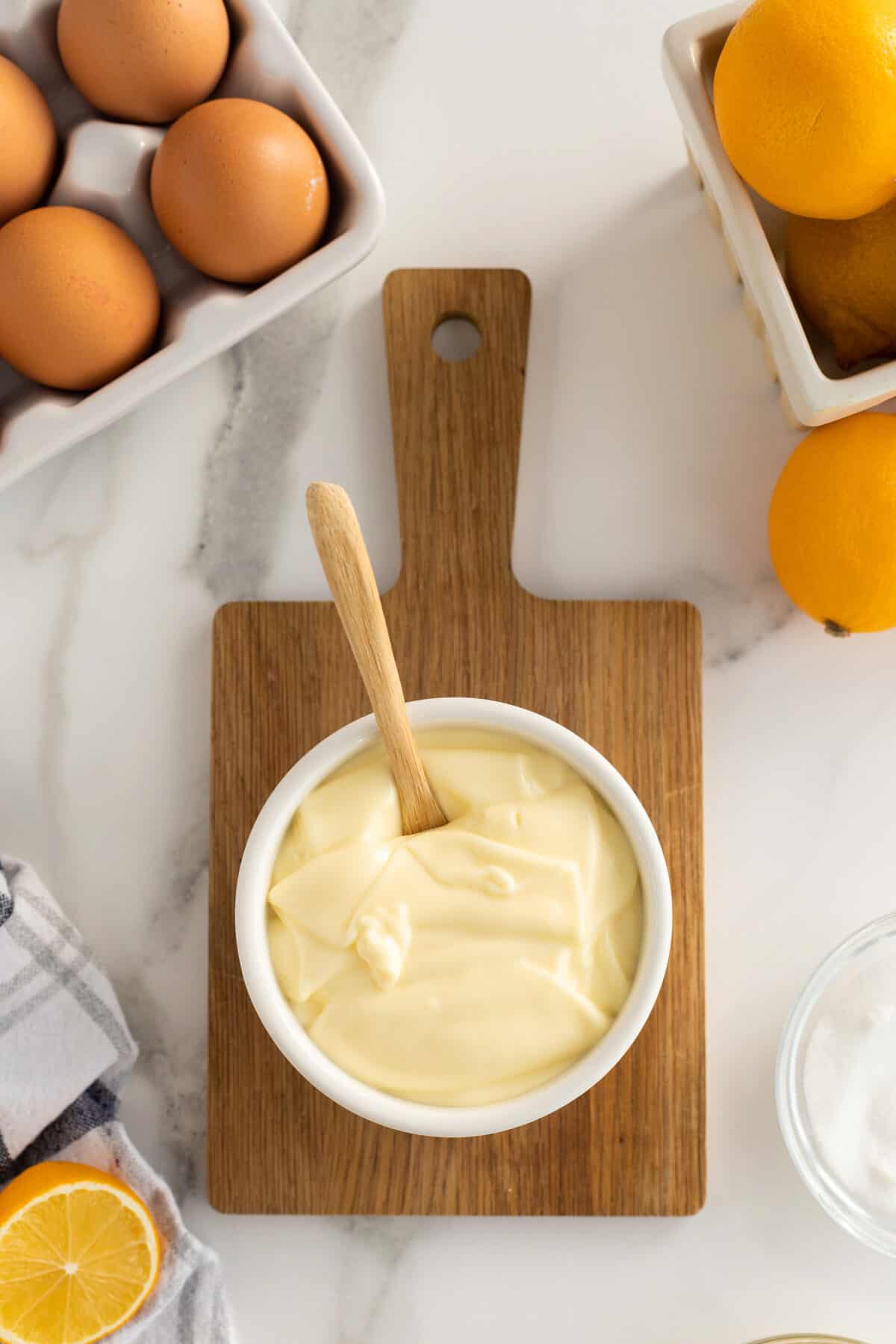
Fun Ways To Add Flavor To Your Homemade Mayonnaise
The recipe below is definitely a more basic, simple type of mayonnaise, and it is almost crying out for a few additions to turn it into something even more flavored and delicious!
- Roasted Garlic Mayonnaise
Perhaps the simplest way to add some flavor to your mayonnaise, roast a whole head of garlic in a low oven with a little bit of olive oil and salt, and then use the whole head! Just crush it up and mix it in, and the whole thing will taste incredible.
- Spicy Mayonnaise
To make a simple spicy mayo, you can either add a few spices like cayenne or other dried chilies, or you could be super extra and use some whole, fresh chilies!
A can of chipotles in adobe, chopped up and mixed into the mayo, will not only make it super vibrantly colored, but also incredible-tasting as well!
- Lemon & Garlic Mayonnaise
Lemon and garlic is a classic combination, and while this mayo obviously already has lemon as a key ingredient, you can simply add a little bit extra garlic at any stage to really amplify those flavors.
For even more garlic flavoring, try adding a sprinkle of garlic powder as well!
Looking for more delicious Sauce & Salad Dressing recipes? Try these out:
Happy Cooking
Love,
Karlynn

Pin this recipe to your SAUCES RECIPE Board and Remember to FOLLOW ME ON PINTEREST!
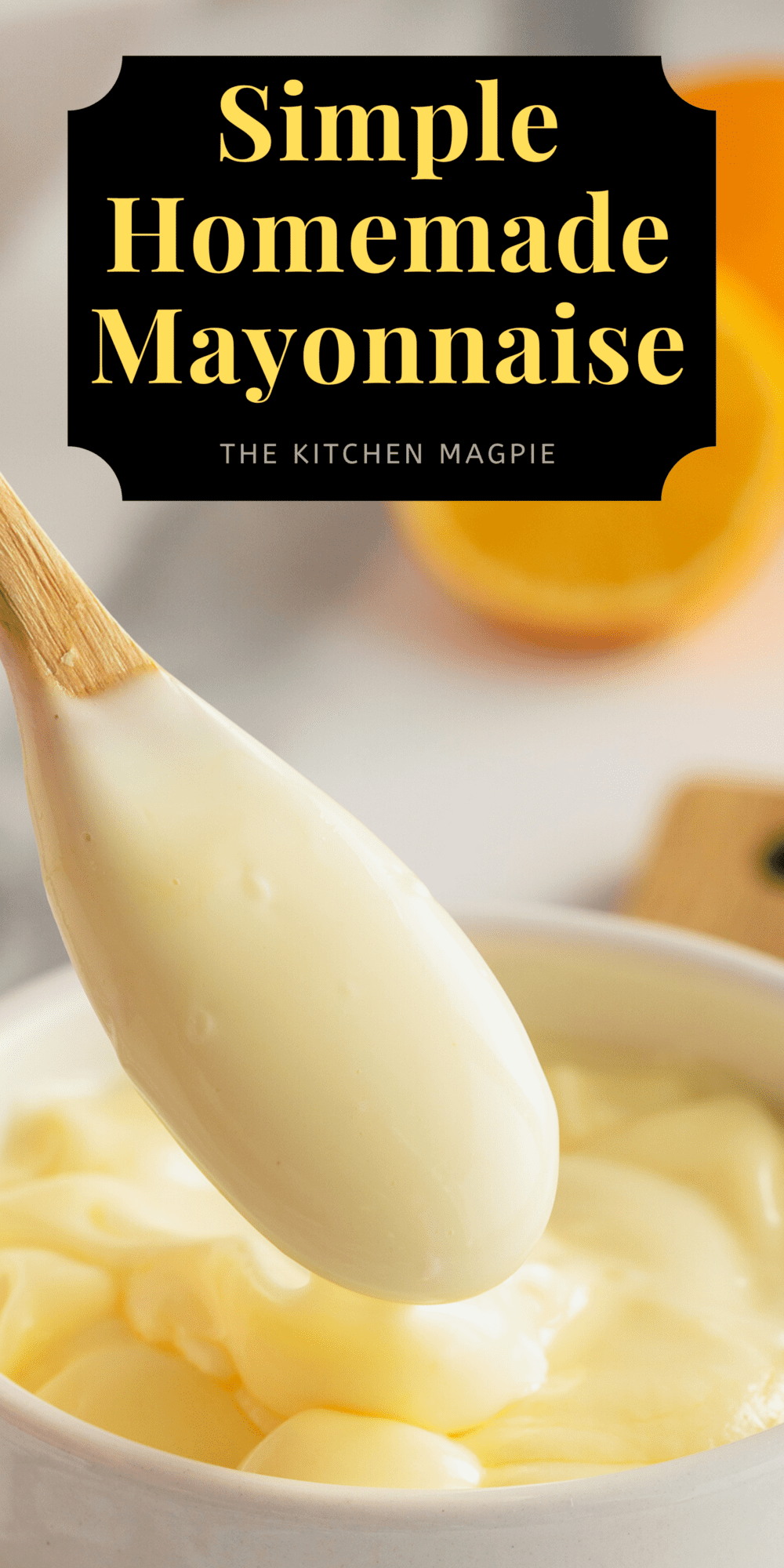

Homemade Mayonnaise
Ingredients
- 2 pasteurized eggs see notes
- 2 Tablespoons white vinegar
- ¼ teaspoon lemon juice (optional)
- ½ teaspoon dry mustard powder
- ¼ teaspoon salt
- 2 cups canola oil
Instructions
- In the container of a food processor or in a deep bowl combine the eggs, vinegar, lemon juice, mustard powder and salt.
- Set the food processor on medium speed, or using a immersion blender in a deep bowl, very slowly drizzle in the oil while it runs and blends in the oil and thickens up. You may need to scrape the sides of the bowl once to ensure it is all combined.
- Transfer to a sealed container and store this in the fridge for up to two weeks. Enjoy this in sandwiches, burgers, dressings and more!
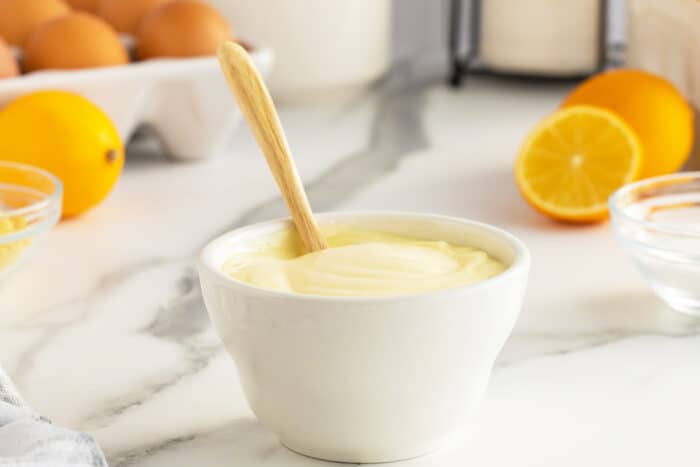



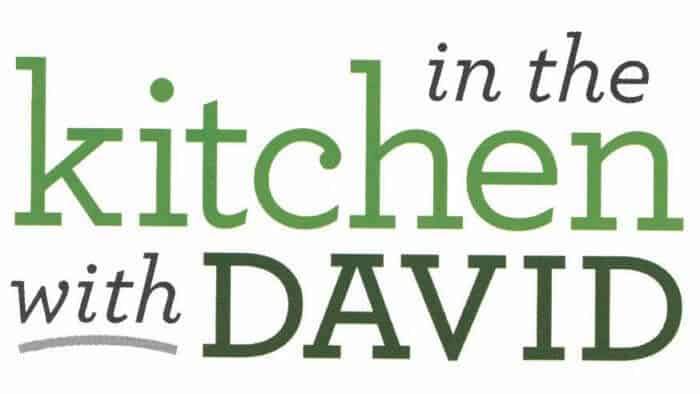





Mumof6 says
first time I made the recipe exactly as written, it’s quite a simple all purpose mayo.
next time I doubled the lemon juice to 1/2 tsp, added 1/4 tsp each of garlic powder and onion powder, that bumped the flavor up a notch, especially for sandwiches.
now I also add a tsp of sugar, but that’s totally optional, just my personal preference. thanks for a great recipe!